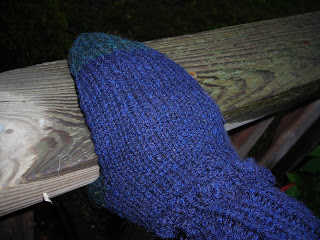Dirgha Kala
 Dirgha kala, in Sanskrit, means over a long time. The phrase comes up in the 14th sutra in Book I of Patanjali's Yoga Sutra-s.
Dirgha kala, in Sanskrit, means over a long time. The phrase comes up in the 14th sutra in Book I of Patanjali's Yoga Sutra-s. This sutra sets out some suggestions for ways to develop a practice. As always, you can understand these writings from the perspective of yoga: how do we build a consistent yoga practice? But you can also think about them as applying to life in a wider context: how do we maintain and develop any kind of endeavor, whether it is work, play, or a combination thereof?
This sutra sets out some suggestions for ways to develop a practice. As always, you can understand these writings from the perspective of yoga: how do we build a consistent yoga practice? But you can also think about them as applying to life in a wider context: how do we maintain and develop any kind of endeavor, whether it is work, play, or a combination thereof?In this sutra, Patanjali suggests that we try a few things. First, stick with it for a period of time. This is the dirgha kala part: kala means time and dirgha suggests an extended period of time. Not a few minutes and then we move on. Not a few days and then we abandon. Nope - staying the course for a chunk of time.
Next nairantarya: without interruption. This one is my favorite, both for the sound of the word in Sanskirt -- nigh-run-tarrr-yee-ah -- and for the meaning. It reminds me that if I want to learn something thoroughly, that I need to resist the urge to multi-task and jump from interest to interest. If I want to become more proficient as a knitter, I need to knit for a while. Not knit today, weave tomorrow, start a quilt the next day. Or, more specifically, if I want to truly understand how a yarn behaves, what projects it will work for, how it will change with different gauges and stitches, then I need to knit with that one type of yarn for a while. I was reminded of this by a master knitter at my LYS, who pointed out that because there is so much choice available in yarns now, that we rarely come to know a yarn well enough to trust it. Or to become creative with it. As I've been knitting my current pair of mittens in Alice Starmore's Hebrides 3-ply, I've been considering staying with that yarn for several pairs, trying out different colorways, and keeping the cost of this amazing yarn within some sense of reason by using it for a small project like mittens.
But back to the sutra: satkara adara asevito are the next suggestions for developing a practice. Satkara means to have a sense of commitment, a belief in what you are doing, to do something sincerely. Adara is to have a positive attitude: we look forward to the venture. And asevito means to do something with a sense of service or respect. This last one is a bit tricky to explain to Westerners, because the idea of service has a negative connotation for many of us. I think of asevito not in the sense of being a servant, but in terms of being part of a tradition, being a student who carries forward the learning from my predecessors.
The last word of the sutra is drdhabumih, which means a strong foundation. As is typical of sutras, the most important word, the point of the sentence, is in the last position. You can start here and work your way forward to get the elaboration. In this case, Patanjali is explaining that, in order to build a strong, solid foundation for a venture - whether it's yoga, or learning to bake bread, or perfecting your tango - you will want to stay with it for a long time, without interruption, with respect and a positive attitude and eagerness.
Patanjali is not telling the reader not to try different things, not taking an authoritarian stance that there is only one right practice. One thing that I love about the sutras is that they are not proscriptive. One of the most often utilised words in the first book is the word va, which means or. As in, if that didn't work, try this. Or this. Or this. But he is noting that the thinner you spread yourself, the less depth in your understanding of each activity. If you're happy experimenting with a new yarn for every project, no problem. But if your goal is to know a yarn so well that you almost don't have to swatch, so that you can readily adapt a pattern to that favorite yarn, so that you take pleasure in knitting because you have reached samadhi - the stage at which the effort falls away and there is a strong link between the mind and the object - then you are going to want some dirgha kala, nairantarya, and so on.
Note: this is the first mitten of a pair of Aethelwyne from Robin Melanson's Knitting New Mittens and Gloves. The yarn is Alice Starmore's Hebrides 3-ply in Kelpie (the blue) and a green whose color I can't recall. Hard to photograph but amazing colorways and a fun, elfin pair of mittens. I feel like I'm ready to be in Lord of the Rings.
Comments